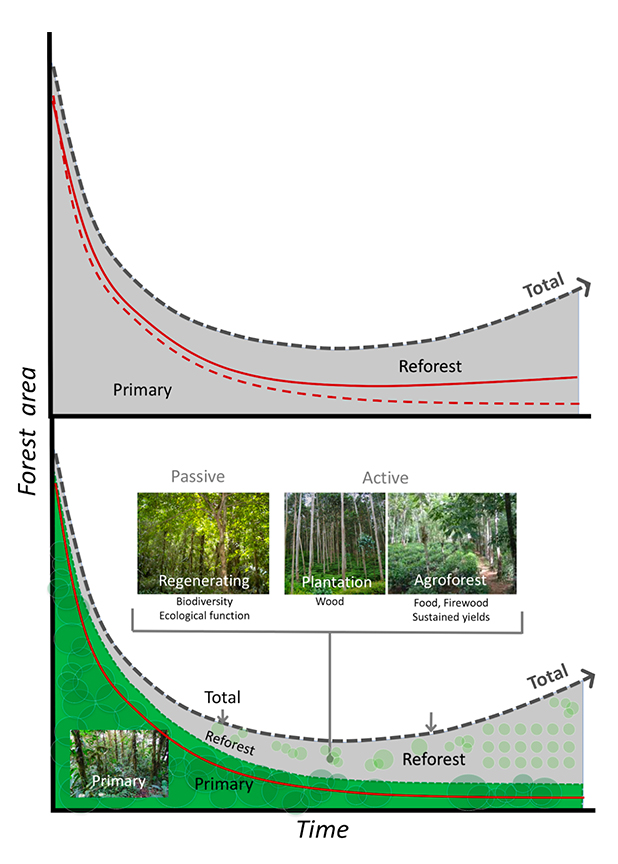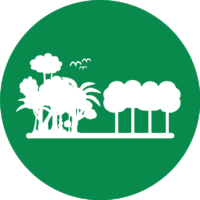Viewing Forest Transition Outcomes through the Lens of Ecosystem Services
Wilson, S.J., J. Schelhas, R. Grau, A. Sofia Nanni and S. Sloan 2017. Forest ecosystem-service transitions: the ecological dimensions of the forest transition. Ecology and Society, 22: 38.
Looking out from a hill over the landscape in many rural farming communities in the tropics, it’s easy to tell that trees and forests are growing back in many different ways, with different uses and functions. Dense, bushy forests regenerating around streams and roads stand in contrast to young plantations of tall, delicate trees. Open understories (and often huge banana leaves) are signs of the agroforests that tend to appear near houses and fields. Trees in grass are a dead giveaway of a silvopastoral system.
Local people often intentionally plant or encourage the growth of different ‘forests’ in different places to obtain different ecosystem services. But in the Forest Transition literature on forest cover changes, all regrowth forests are usually lumped into a single category, ignoring both their ecological attributes and the ecological goods and services they produce. The result is a simplistic understanding of the forests within a region – although we know that what regrows is often different from what was cleared, we do not measure this, and as a result the benefits from forest recovery are hidden, misunderstood, or misestimated, which can have serious implications for both policy and practice.
Our analysis shows that secondary forests of different types have different ecological attributes, and thus produce different goods and services. We reviewed the literature on ecosystem services from different secondary forest types, created ‘types’ of forest transitions and the ecosystem services they produce, and analyzed case studies to enrich our understanding. We then classified forest return around the world to show where different types of transitions, and their resulting forests, are occurring.
Our framework – the ecosystem service transition curve – can be used to think about how different pathways of recovery produce ecosystem services, and how these services change over time as forests grow. This information can help us understand what we might expect from different scenarios of forest recovery over time, and help stakeholders take an active role in meeting needs through forests at different scales. Our approach highlights the need for more research on identifying different forest types using satellite imagery, and to the need for more examples of landscape-level forest recovery and the ecosystem services supplied.
The PARTNERS connection
This work began at the inaugural PARTNERS workshop in 2014 in the Forest Transition Working Group, where it was the focus of multiple days of discussion, debate, and whiteboard sketches. The framework was reviewed in the subsequent PARTNERS meeting in 2015. Work was also presented in the ATBC PARTNERS symposium in Honolulu, Hawaii, in 2015.



